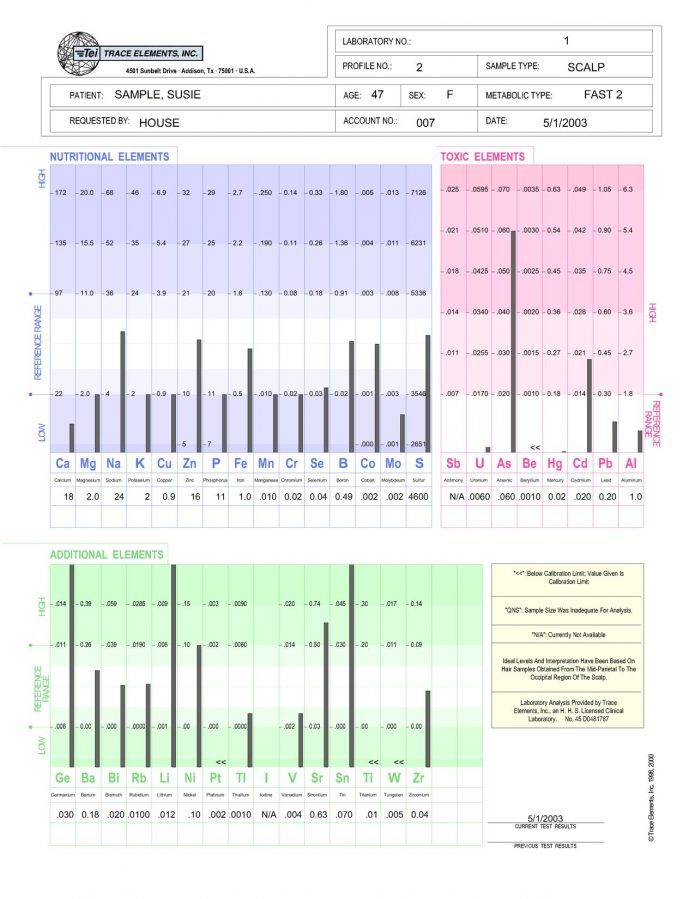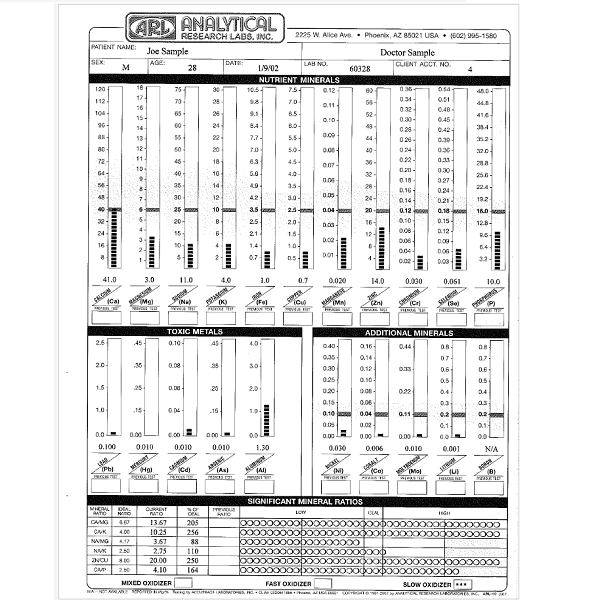
Table of Contents
FOR IMMEDIATE RELEASE
Orthomolecular Medicine News Service, March 22, 2025
Measles: A Nutritional Deficiency Disease – Integrative Orthomolecular Medicine for the Prevention and Management of Measles
Richard Z. Cheng, M.D., Ph.D.
Highlights:
- It is very important to consider Measles and Nutrition
- Malnourished children are 5-10 times more likely to die from measles.
- Vitamin A, C, D, zinc, and antioxidants play a critical role in measles prevention and recovery.
- Before vaccines, improved nutrition and sanitation had already dramatically reduced measles deaths.
- Integrative Orthomolecular Medicine (I-OM) provides a powerful, evidence-based approach to immune resilience.
Abstract
In 2025, the United States is witnessing a resurgence of measles, with over 250 cases reported across multiple states and two confirmed deaths, including an unvaccinated child in Texas.
Amid this outbreak, discussions have emerged about the impact of nutritional status on measles severity, with experts noting that malnourished children are significantly more susceptible to severe complications. Health and Human Services Secretary Robert F. Kennedy Jr. has recently emphasized the role of vitamin A supplementation in mitigating severe disease and reducing measles-related mortality. This perspective underscores a growing recognition that nutritional interventions should be a key component of measles prevention.
Measles is not merely an infectious disease; its severity and susceptibility are significantly influenced by nutritional status. Deficiencies in vitamins A, C, D, B-complex, and zinc have been linked to increased vulnerability and worsened outcomes. While vaccination plays a role, historical data show that improved nutrition, sanitation, and public health measures substantially reduced measles mortality before vaccines were introduced.
Integrative Orthomolecular Medicine (I-OM) offers a holistic, science-backed approach to measles prevention and management. High-dose nutrient therapy enhances immune resilience, while the ToolKit Theory advocates for a multifaceted strategy in disease prevention. This article explores how optimal nutrition can be the first line of defense against measles.
Introduction
Measles has re-emerged in 2025, with over 250 reported cases in the U.S. and two confirmed deaths. While vaccination dominates the discussion, nutritional deficiencies remain an overlooked yet critical factor in measles severity. Health and Human Services Secretary Robert F. Kennedy Jr. has emphasized vitamin A’s role in reducing measles mortality. However, vitamin A is just one of many essential nutrients for measles prevention and recovery. This article presents the Integrative Orthomolecular Medicine (I-OM) approach, highlighting evidence-based nutrient strategies to enhance immune resilience and reduce measles severity.
1. Malnutrition: A Primary Risk Factor for Severe Measles Outcomes
Measles disproportionately affects malnourished individuals, with deficiencies in key micronutrients contributing to both susceptibility and disease severity.
Key Findings:
- Immune Suppression: Malnutrition weakens immune defenses, increasing measles vulnerability [1-5].
- Vitamin A Deficiency: Linked to measles-related blindness, pneumonia, and higher mortality [4,6].
- Weaker Vaccine Response: Even vaccinated children with poor nutrition show weaker immunity [2].
- A Large Review of 67 studies confirms that children with malnutrition and vitamin A deficiency are far more likely to suffer severe measles complications [7].
- Malnourished Children Have Higher Mortality: 44.8% of childhood measles deaths are directly linked to malnutrition [3]. Data indicate that children suffering from severe malnutrition are at a 5 to 10 times higher risk of death from measles than well-nourished children [5].
“Malnourished children are 5-10 times more likely to die of measles”
These findings underscore the need for global policies addressing nutritional deficiencies to reduce measles mortality.
2. The Role of Vitamins, Antioxidants, and Micronutrients in Measles Prevention and Management
2.1. Immune System Modulation & Enhancement
- Vitamin C: Enhances immunity, reduces viral replication and oxidative stress [8].
- Vitamin D: Regulates immune responses, enhances antimicrobial peptides (cathelicidins & defensins), and reduces inflammation [9].
- Zinc: inhibits viral replication and enhances immune function [8].
- Selenium: Reduces oxidative stress, enhances antiviral immunity, and prevents viral mutations [8].
- Quercetin: Functions as a zinc ionophore, facilitating zinc’s antiviral effects inside cells [10,11].
- NAC (N-Acetylcysteine): Supports glutathione production, enhances immune response, and reduces viral-induced inflammation [12].
2.2. Taming Oxidative Stress and Excessive Inflammation in Measles
Severe measles cases are often driven by unchecked inflammation [13,14] and oxidative stress [15-17], which can worsen complications and increase mortality risk. While the term “cytokine storm” is not commonly used in measles, excessive immune activation-marked by elevated cytokines like TNF-α, IL-1β, and IL-6-plays a crucial role in disease progression. At the same time, measles disrupts the body’s delicate balance of antioxidants and pro-oxidants, leading to increased oxidative stress and weakened defenses.
This dangerous combination is not unique to measles. Similar inflammatory cascades occur in viral infections like COVID-19, causing tissue damage, respiratory distress, organ failure, and higher mortality. Unfortunately, mainstream medicine largely overlooks one of the most effective ways to counteract this process: antioxidants. By reducing oxidative stress and calming excessive inflammation, antioxidants offer a powerful yet underutilized strategy to improve outcomes and protect vital organs [18-20].
During the COVID-19 pandemic, I applied this approach successfully in critical cases, using a targeted regimen of antioxidants to restore immune balance and support recovery [21,22].
- Vitamin C & E: Combat oxidative stress, reducing cytokine storms [8].
- Glutathione: Master antioxidant that protects immune cells, and reduces viral load [23,24].
- Alpha-Lipoic Acid (ALA): Regenerates antioxidants (Vitamin C & E) and prevents oxidative damage [25,26].
2.3. Enhancing Mucosal Barrier and Lung Protection
- Vitamin A: Essential for maintaining mucosal integrity, preventing viral entry, and supporting respiratory health [8].
- Omega-3 Fatty Acids (DHA & EPA): Reduce lung inflammation and support infection recovery [27,28].
2.4. Inhibition of Viral Replication & Spread
- Magnesium: Supports immune function, reduces inflammation, and prevents complications like cardiovascular damage [29,30]
- Zinc: Directly inhibits viral polymerase enzymes, reducing viral replication [8].
- Vitamin C & NAC: Reduce viral load by limiting viral-induced oxidative stress [8].
- Quercetin & Resveratrol: Block viral entry into cells and inhibit viral replication [31,32].
- Selenium: Prevents viral mutations and enhances antiviral enzyme activity [8].
2.5. Support for Energy Production & Cellular Repair
- B Vitamins (B1, B2, B3, B6, B12): Essential for mitochondrial function, immune cell energy production, and reducing fatigue during infections [8].
- Coenzyme Q10 (CoQ10): Supports mitochondrial function and protects against viral-induced energy depletion [33].
2.6. Conclusion
Integrating these vitamins, antioxidants, and micronutrients into a daily regimen can significantly enhance immune resilience, reduce viral severity, and promote faster recovery while preventing complications.
3. Clinical Application: The ToolKit Theory in Measles Management
The ToolKit Theory [34] challenges the flawed “one-size-fits-all” approach to disease management, advocating for a personalized, nutrition-based strategy. It emphasizes three key principles: (1) Safety first-nutrients like vitamins A, C, D, and zinc are highly safe and effective; (2) Proven effectiveness-decades of clinical data support orthomolecular medicine in infectious disease prevention; and (3) Affordability & accessibility-supplements of nutrients are cost-effective and widely available.
This integrative framework optimizes health through targeted nutrient therapies, making it a powerful tool in measles prevention and management [35,36].
Suggested Nutrient Doses for Measles Prevention and Management:
- Vitamin A: 50,000-100,000 IU (acute), 10,000-25,000 IU (prevention) – supports mucosal integrity & immune function.
- Vitamin C: 5,000-20,000 mg/day – reduces oxidative stress & viral load. Reduce dose if it causes a laxative effect.
- Vitamin D: 5,000-10,000 IU/day – modulates immunity, reduces inflammation.
- Zinc: 30-75 mg/day – inhibits viral replication.
- Selenium: 200-400 mcg/day – prevents viral mutations, boosts immunity.
- Quercetin: 500-1,500 mg/day – functions as a zinc ionophore, enhances antiviral effects.
- NAC (N-Acetylcysteine): 600-2,000 mg/day – boosts glutathione, reduces lung inflammation.
- Vitamin E: 200-800 IU/day – combats oxidative stress, protects immune cells.
- Glutathione: 500-1,000 mg/day – master antioxidant that supports immune defense.
- Alpha-Lipoic Acid (ALA): 300-600 mg/day – regenerates antioxidants, prevents oxidative damage.
- Omega-3 Fatty Acids (EPA/DHA): 2,000-4,000 mg/day – reduces lung inflammation, supports immune function.
- Magnesium: 500-1,500 mg/day (glycinate, malate, or threonate) – supports immune function, reduces inflammation. Reduce dose if it causes a laxative effect.
- Resveratrol: 200-500 mg/day – inhibits viral replication, provides antioxidant benefits.
- B Vitamins (B1, B2, B3, B6, B12): B1: 100-500 mg/day; B3: 500-2,000 mg/day; B12: 500-2,000 mcg/day – essential for mitochondrial function, immune energy production.
- Coenzyme Q10 (CoQ10): 100-300 mg/day – supports mitochondrial function, prevents viral-induced fatigue.
For measles prevention and treatment, optiimal nutrition is not optional-it is the first line of defense.
4. The Role of Nutrition in the Historical Decline of Measles Mortality
Historical data shows that measles deaths dropped dramatically before vaccines-99.5% in Australia [37] (Fig. 1), 90% in the UK [38]-largely due to improved nutrition and sanitation. WHO reports that vitamin A alone can reduce mortality by 62% [39].
Figure 1. Source: Ref [37].
“Before vaccines, improved nutrition and sanitation had already dramatically reduced measles deaths.”
Takeaway: Public health efforts must shift toward addressing nutritional deficiencies to further reduce measles-related mortality.
5. Conclusion: A Paradigm Shift in Measles Prevention and Management
- Measles severity is directly linked to nutrition.
- Nutritional interventions are safe, effective, and accessible.
- Vaccination plays a role, but optimizing nutrition is equally crucial.
- Orthomolecular medicine offers science-based solutions to lower measles-related mortality.
To truly reduce measles-related deaths, public health strategies must prioritize nutrition alongside vaccines. Well-nourished individuals are far less likely to suffer severe measles complications-yet this critical factor remains overlooked.
Call to Action:
Governments, doctors, and parents must recognize that nutrition is a powerful tool in measles prevention. It’s time to act. Boosting immunity starts with better nutrition.
Orthomolecular Medicine
Orthomolecular medicine uses safe, effective nutritional therapy to fight illness. For more information: http://www.orthomolecular.org
|
The peer-reviewed Orthomolecular Medicine News Service is a non-profit and non-commercial informational resource. Editorial Review Board:Jennifer L. Aliano, M.S., L.Ac., C.C.N. (USA) Andrew W. Saul, Ph.D. (USA), Founding Editor Comments and media contact: editor@orthomolecular.org OMNS welcomes but is unable to respond to individual reader emails. Reader comments become the property of OMNS and may or may not be used for publication. Click here to see a web copy of this news release: https://orthomolecular.acemlna.com/p_v.php?l=1&c=399&m=370&s=c676db463c14f4e1bba88b9251c9453f |
|
|
This news release was sent to dr@healthalways.com. If you no longer wish to receive news releases, please reply to this message with “Unsubscribe” in the subject line or simply click on the following link: unsubscribe . To update your profile settings click here . This article may be reprinted free of charge provided 1) that there is clear attribution to the Orthomolecular Medicine News Service, and 2) that both the OMNS free subscription link http://orthomolecular.org/subscribe.html and also the OMNS archive link http://orthomolecular.org/resources/omns/index.shtml are included. Riordan Clinic | Orthomolecular.org |
FAQ’s
How is Measles transmitted?
Measles is primarily transmitted through direct contact with respiratory droplets or airborne spread from coughing and sneezing.
Is measles only in children?
No, measles can affect people of all ages.
Products
At Home Tests for Nutritional Status
-
←→

Trace Elements Nutritional Deficiencies Hair Test
Nutritional Tests, At Home Health Tests, Toxic Metals Tests, Hair Tests, Autism Tests, Immune System Tests$188.00 $148.00Successfully Added to your Shopping CartAdding to Cart... -
←→

Analytical Research Labs Hair Test
$179.00$149.00Providing a mineral blueprint of one’s biochemistry, an Analytical Research Labs Hair Minerals Test reports levels of minerals and heavy metals in your body giving possible reasons for your symptoms, with suggestions for nutritional supplements and diet changes. Hair tissue mineral analysis can provide pertinent information about balanced nutrition, one’s metabolic rate, energy levels, sugar and carbohydrate tolerance, stage of stress, immune system and glandular activity.- Buy 2 at $145.00
Analytical Research Labs Hair Test
$179.00 $149.00Successfully Added to your Shopping CartAdding to Cart...
Supplements
References
- 1. Dossetor J, Whittle HC, Greenwood BM (1977) Persistent measles infection in malnourished children. Br Med J. 1:1633-1635. https://pubmed.ncbi.nlm.nih.gov/871699
- 2. Eskenazi B, Rauch S, Elsiwi B, et al. (2025) Undernutrition and antibody response to measles, tetanus and Haemophilus Influenzae type b (Hib) vaccination in pre-school south African children: The VHEMBE birth cohort study. Vaccine. 46:126564. https://pubmed.ncbi.nlm.nih.gov/39665976
- 3. Fu H, Flasche S (2025) Modelling the role of undernutrition in measles transmission and vaccination. [cited 2025 Mar 13] https://www.lshtm.ac.uk/study/research/nagasaki-lshtm-phd/modelling-role-undernutrition-measles-transmission-and-vaccination-nulshtm-project
- 4. Noori N, Skrip LA, Oron AP, et al. (2022) Potential Impacts of Mass Nutritional Supplementation on Measles Dynamics: A Simulation Study. Am J Trop Med Hyg. 107:863-872. https://pubmed.ncbi.nlm.nih.gov/36096407
- 5. Salama P, Assefa F, Talley L, et al. (2001) Malnutrition, measles, mortality, and the humanitarian response during a famine in Ehiopia. JAMA. 286:563-571. https://pubmed.ncbi.nlm.nih.gov/11476658
- 6. WHO. (2024) Measles. https://www.who.int/news-room/fact-sheets/detail/measles
- 7. Tran IC, Gregory C, O’Connor P, et al. (2023) A scoping review on the associations and potential pathways between malnutrition and measles. https://www.medrxiv.org/content/10.1101/2023.01.21.23284872v1
- 8. ISOM. COVID-19. ISOM https://isom.ca/covid-19
- 9. Grant WB, Wimalawansa SJ, Pludowski P, Cheng RZ (2025) Vitamin D: Evidence-Based Health Benefits and Recommendations for Population Guidelines. Nutrients, 17:277. https://pubmed.ncbi.nlm.nih.gov/39861407
- 10. Dabbagh-Bazarbachi H, Clergeaud G, Quesada IM, et al. (2014) Zinc ionophore activity of quercetin and epigallocatechin-gallate: from Hepa 1-6 cells to a liposome model. J Agric Food Chem. 62:8085-8093. https://pubmed.ncbi.nlm.nih.gov/25050823
- 11. Agrawal PK, Agrawal C, Blunden G (2020) Quercetin: Antiviral Significance and Possible COVID-19 Integrative Considerations. Natural Product Comm. 15:1934578X20976293. https://journals.sagepub.com/doi/full/10.1177/1934578X20976293
- 12. Santus P, Danzo F, Zuffi A, et al. (2022) Oxidative stress and viral Infections: rationale, experiences, and perspectives on N-acetylcysteine. Eur Rev Med Pharmacol Sci. 26:8582-8590. https://pubmed.ncbi.nlm.nih.gov/36459039
- 13. Lin W-HW, Nelson AN, Ryon JJ, et al. (2017) Plasma Cytokines and Chemokines in Zambian Children With Measles: Innate Responses and Association With HIV-1 Coinfection and In-Hospital Mortality. J Infect Dis. 215:830-839. https://pubmed.ncbi.nlm.nih.gov/36459039
- 14. Veklych KA, Popov MM, Liadova TI, et al. (2021) [Cytokine profile of patients with the measles infection of varying severity.] Pathologia 18:66-71. http://pat.zsmu.edu.ua/article/view/215491
- 15. Solmaz A, İlter S, Koyuncu İ, Gümüş, HA (2022) A Predictor of Oxidative Stress in the Children with Measles: Thiol-Disulfide Homeostasis. Turk Arch Pediatr. 57:200-204. https://pubmed.ncbi.nlm.nih.gov/35383015
- 16. Cemek, M, Dede S, Bayiroglu F, et al. (2007) Oxidant and non-enzymatic antioxidant status in measles. J Trop Pediatr. 53:83-86. https://pubmed.ncbi.nlm.nih.gov/17158812
- 17. Abilés J, Pérez de la Cruz A, Castaño J, et al. (2006) Oxidative stress is increased in critically ill patients according to antioxidant vitamins intake, independent of severity: a cohort study. Crit Care 10:R146. https://pubmed.ncbi.nlm.nih.gov/17040563
- 18. Cheng RZ (2022) A Hallmark of Covid-19: Cytokine Storm/Oxidative Stress and its Integrative Mechanism. Orthomolecular Med News Serv. https://orthomolecular.org/resources/omns/v18n03.shtml
- 19. Cheng RZ (2020) Vitamin C in the Treatment and Prevention of COVID-19. ISOM, https://isom.ca/learning/webinars/vitamin-c-covid19
- 20. Cheng RZ (2021) Vitamin C and COVID-19: Orthomolecular Medicine for Improving Patient Outcomes. ISOM, https://isom.ca/learning/conference-proceedings/50th-omt/vitamin-c-and-covid-19-orthomolecular-medicine-for-improving-patient-outcomes
- 21. Cheng RZ (2019) Integrative Antioxidant Therapy in the Treatment of a Severe Covid-19 Patient. Cheng Integrative Health Center, https://www.drwlc.com/blog/2021/09/19/systemic-antioxidant-use-in-the-treatment-of-a-severe-covid-19-patient
- 22. Passwater M, Cheng RZ (2023) How to improve medical care: include treatment with nutritional supplements. Orthomolecular Med News Serv. https://orthomolecular.org/resources/omns/v19n22.shtml
- 23. Spearow JL, Copeland, L (2020) Review: Improving Therapeutics for COVID-19 with Glutathione-boosting Treatments that Improve Immune Responses and Reduce the Severity of Viral Infections. https://doi.org/10.31219/osf.io/y7wc2
- 24. Whelan C (2024) Glutathione Benefits for Your Health and Body. https://www.healthline.com/health/glutathione-benefits
- 25. Maciejczyk M, Żebrowska E, Nesterowicz M, et al. (2022) α-Lipoic Acid Strengthens the Antioxidant Barrier and Reduces Oxidative, Nitrosative, and Glycative Damage, as well as Inhibits Inflammation and Apoptosis in the Hypothalamus but Not in the Cerebral Cortex of Insulin-Resistant Rats. Oxidative Med Cell Longevity, 2022:7450514. https://onlinelibrary.wiley.com/doi/full/10.1155/2022/7450514
- 26. Superti F, Russo R (2024) Alpha-Lipoic Acid: Biological Mechanisms and Health Benefits. Antioxidants, 13:1228. https://pubmed.ncbi.nlm.nih.gov/39456481
- 27. Patchen BK, Balte P, Bartz TM, et al. (2023) Investigating Associations of Omega-3 Fatty Acids, Lung Function Decline, and Airway Obstruction. Am J Respir Crit Care Med. 208:846-857. https://pubmed.ncbi.nlm.nih.gov/37470492
- 28. Rogero MM, de C Leão M, Santana TM, et al. (2020) Potential benefits and risks of omega-3 fatty acids supplementation to patients with COVID-19. Free Radic Biol Med. 156:190-199. https://pubmed.ncbi.nlm.nih.gov/32653511
- 29. Levy T (2019) Magnesium: Reversing Disease. Medfox Pub. ISBN-13: 978-0998312408.
- 30. Dean, C. The Magnesium Miracle (Second Edition). Ballantine Books. ISBN-13: 978-0399594441
- 31. Colunga Biancatelli RML, Berrill M, Catravas JD, Marik, P. E. (2020) Quercetin and Vitamin C: An Experimental, Synergistic Therapy for the Prevention and Treatment of SARS-CoV-2 Related Disease (COVID-19). Front Immunol. 11:1451. https://pubmed.ncbi.nlm.nih.gov/32636851
- 32. Rossi GA, Sacco O, Capizzi A, Mastromarino P (2021) Can Resveratrol-Inhaled Formulations Be Considered Potential Adjunct Treatments for COVID-19? Front Immunol. 12:670955. https://pubmed.ncbi.nlm.nih.gov/34093569
- 33. Weil A (2025) Coenzyme Q10. [Accessed 2025-03-18] https://www.drweil.com/vitamins-supplements-herbs/vitamins/coenzyme-q10-coq10
- 34. Cheng RZ (2024) A Paradigm Shift in Epidemic and Chronic Disease Management. Orthomolecular Med News Serv. https://orthomolecular.org/resources/omns/v20n23.shtml
- 35. Cheng RZ (2025) Preventing Infections: Integrative Orthomolecular Medicine Protocol. http://www.drwlc.com/blog/2025/01/09/preventing-viral-infections-integrative-orthomolecular-medicine-protocol
- 36. Cheng RZ (2025) Treating Infections: Integrative Orthomolecular Medicine Protocol. http://www.drwlc.com/blog/2025/01/09/acute-infection-treatment-integrative-orthomolecular-medicine-protocol
- 37. Beattie G (2025) Vaccines – Reassessing Their Relevance. Orthomolecular Med News Serv. https://orthomolecular.org/resources/omns/v21n15.shtml
- 38. Holford P (2020) Did Vaccinations or Vitamins Stop Measles Deaths? https://www.patrickholford.com/did-vaccinations-vitamins-stop-measles-deaths
- 39. Barclay AJ, Foster A Sommer A. (1987) Vitamin A supplements and mortality related to measles: a randomised clinical trial. Br Med J. (Clin Res Ed) 294:294-296. https://pubmed.ncbi.nlm.nih.gov/3101849

